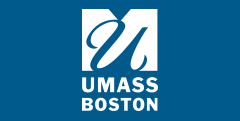Abstract
In October 2007, the Boston chapter of the NAACP hosted a roundtable on the Niagara Movement. In honor of the Niagara Movement meeting in Boston in 1907, the NAACP and the Trotter Institute collaborated on a series of events marking the centennial of the gathering Niagara men and women in Boston, the largest of five annual meetings of the Niagara Movement and the first to include women as voting delegates. The roundtable, like the 1907 Niagara Movement meeting, was held in Faneuil Hall. The inclusion of women as full participants in the Niagara Movement speaks to the force and significance of the Black Women’s Club Movement, in which Josephine St.-Pierre Ruffin of Boston and Mary Church Terrell of Washington, D.C., among many, many others, were prominent.
Five panelists participated in a discussion, moderated by Sarah Ann Shaw, community activist and former television journalist, about the Niagara Movement’s origins, the reasons it fell apart, the need for a similar organization today, and what shape it might take.
The panelists were L’Merchie Frazier, director of education at the Museum of Afro-American History in Boston; Kerri Greenidge, historian for the Boston African-American Historic Site, a branch of the National Park Service; Robert Hall, associate professor of African American Studies at Northeastern University; William Strickland, associate professor in the W. E. B. Du Bois Department of Afro-American Studies at the University of Massachusetts Amherst; and Geoff K. Ward, then an assistant professor in the College of Criminal Justice at Northeastern University.
Recommended Citation
Ward, Geoff K.
(2009)
"The Racial History of Juvenile Justice,"
Trotter Review: Vol. 18:
Iss.
1, Article 11.
Available at:
https://scholarworks.umb.edu/trotter_review/vol18/iss1/11

